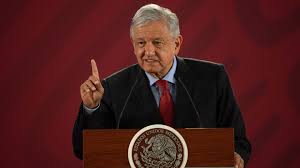Would you like to be part of America’s space program?
University of Wisconsin-Milwaukee students recently had a chance to hear from a top NASA (National Aeronautics and Space Administration) official about opportunities with the agency.
M. David Kankam, of NASA’s Glenn Research Center (GRC), spoke to students and faculty in January about internships, scholarships, fellowships and summer programs with the space agency. He even collected a few resumes from interested students at a Summer Opportunities Fair.
Like many other agencies relying on talent in the STEM (science, technology, engineering, mathematics) fields, NASA is interested in diversifying its workforce.
“We’re interested in increasing diversity in our workforce,” said Kankam, as NASA competes with businesses and other engineering and scientific agencies for talented students and graduates. “We want to get more students from underrepresented groups coming into the pipeline through NASA internships, fellowships and scholarships.”
In the morning, he spoke to students in UWM’s WiscAMP (Wisconsin Alliance for Minority Participation) program, a UW-System initiative that provides academic supports and mentoring to underrepresented students STEM fields.
As University Affairs Officer, Kankam is responsible for directing the NASA Space and Aeronautics Academies at Glenn and for research collaborations with universities. The bulk of the opportunities at NASA are in STEM fields, he said.
Through its programs at nine centers in the United States and its Jet Propulsion Lab, NASA offers multiple opportunities to students, Kankam said. “You can apply to as many as 15 projects, or what we call opportunities,” he said. “Conceivably, you can get three or four offers, depending on the needs of the different centers…then you are in the driver’s seat as to which one you want to respond to.”
He advised students interested in programs to go https://intern.nasa.gov to start the process. (Summer internship application deadline is March 1, but other opportunities are available with different deadlines). “NASA spends a lot of money on education to replenish the workforce. It is taxpayer money spent wisely to develop people,” he said.
He encouraged UWM students in STEM fields to stick with their programs and graduate. Whatever a student area of scientific interest and expertise, there is likely to be a NASA opportunity that fits, he said.
“We have some unique programs that allow work on hands-on projects. You just have to know where to go to look for the information. Articulate on your resume the skills that match the opportunity you’re looking for. We are looking for the next generation of scientists and engineers to replenish the STEM workforce.”
Keaunis Grant, a UWM biomedical sciences major, said he found the presentation very helpful. “Providing actual links/websites helped me to remember how to get the information for review later. The explanation of the various programs available helped me to have a better understanding of the programs.” While is current academic plans are set, he added “I am very interested in applying for one of the scholarships or internships. I think they are great opportunities to learn and apply what we are learning at the university.”
An electrical engineer who has served NASA as a senior research engineer and acting chief of the Electromechanical Systems Branch, Kankam said he was attracted to his career because he was educated at schools with strong programs and teachers in the sciences and mathematics.
“Education has always been very, very strong in my family,” he said. Born and raised in Ghana, he is the ninth of 11 children and was inspired by his teachers, parents and the example of his siblings. “They were role models.”





